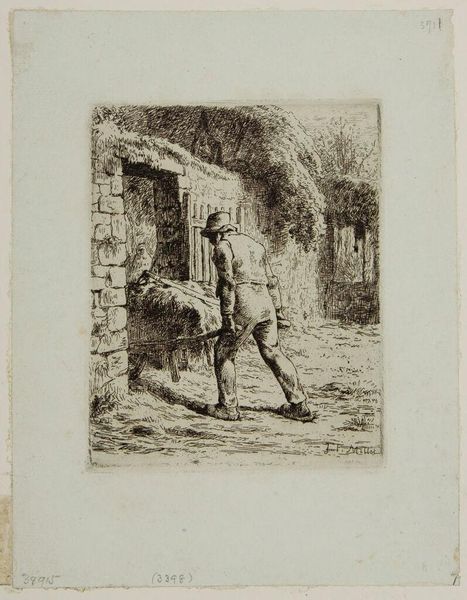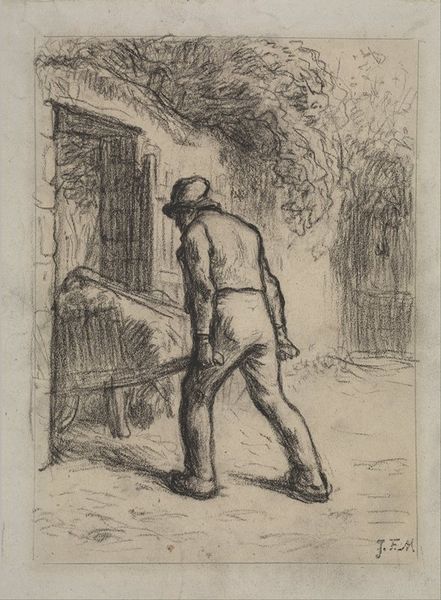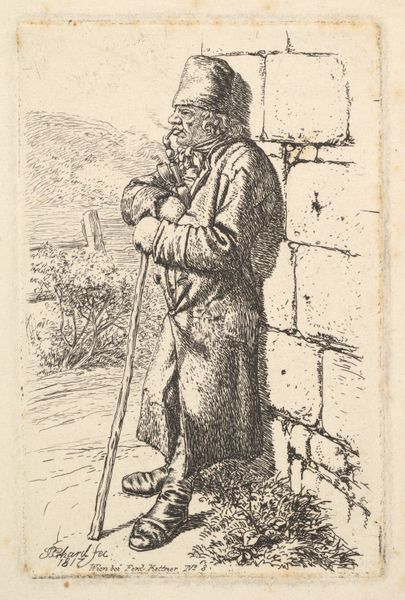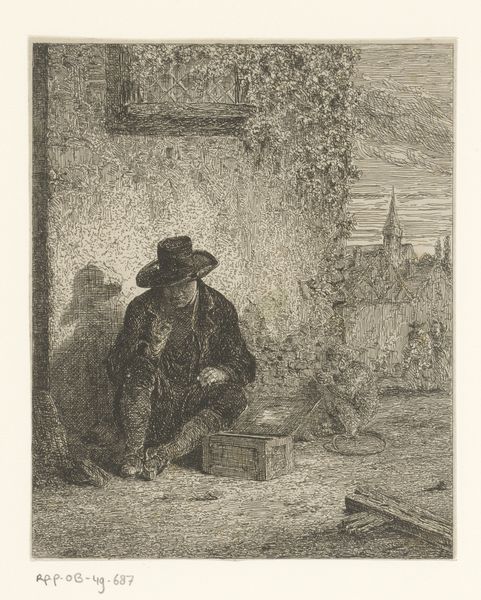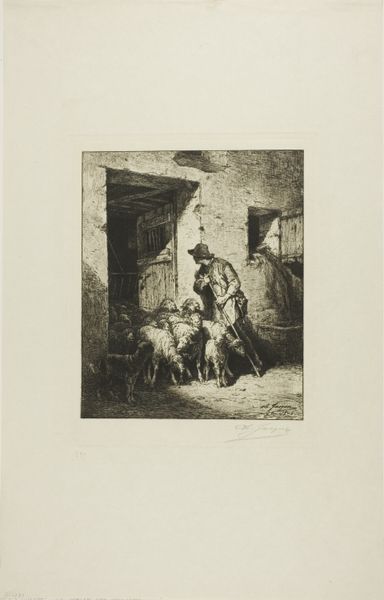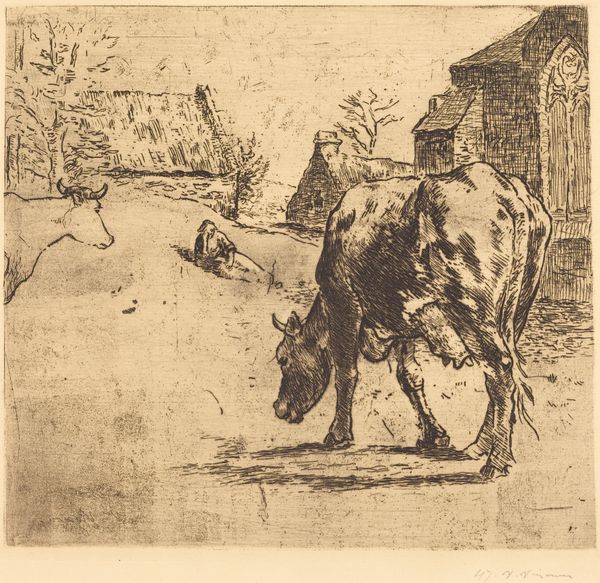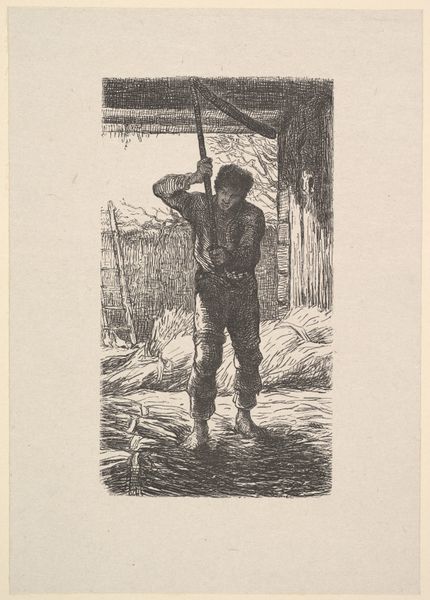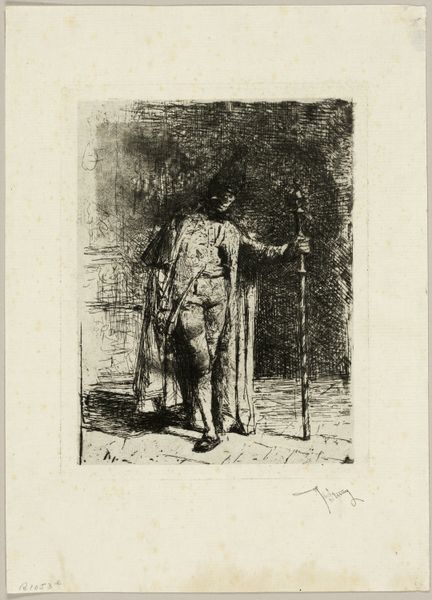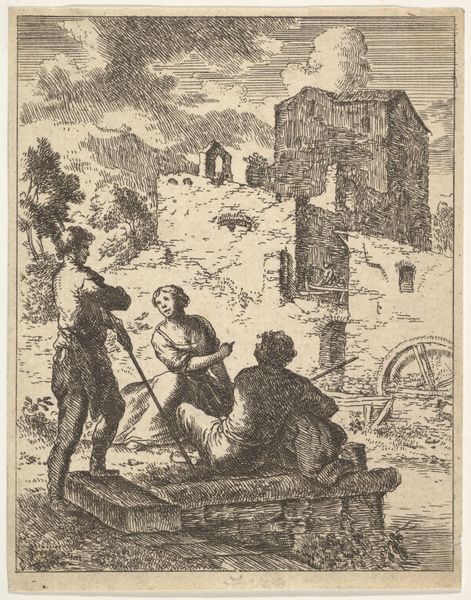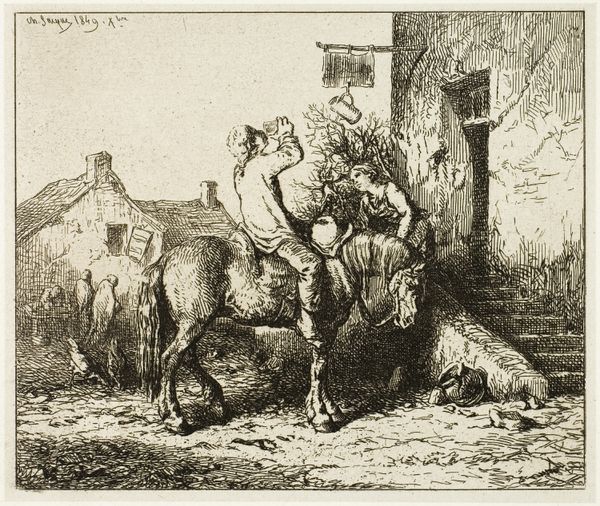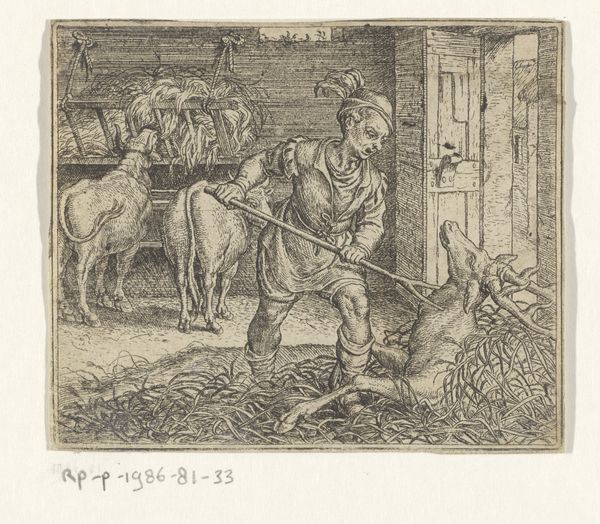
drawing, print, etching
#
drawing
# print
#
etching
#
landscape
#
men
#
genre-painting
#
realism
Dimensions: plate: 6 7/16 x 5 1/4 in. (16.4 x 13.3 cm) sheet: 10 3/16 x 9 1/4 in. (25.8 x 23.5 cm)
Copyright: Public Domain
Curator: Up next we have "Peasant Pushing a Wheelbarrow," an etching crafted in 1855 by Jean-François Millet. It resides here at The Metropolitan Museum of Art. My first impression of the image is its starkness, a powerful simplicity achieved through a limited tonal range. What strikes you first? Editor: That's fair. It’s the starkness of the materials actually that jumps out for me: ink on paper, the hard labor to work the press, and the implied manual labor of the figure depicted within the image, all adding up to an aesthetic statement. You know, Millet always elevated rural labor to a position of visual importance. Curator: Exactly. The bent posture, the worn clothing… these are intentional visual cues laden with cultural symbolism. Peasants had been a motif in art for centuries, but often ridiculed. Here, we're invited to contemplate the nobility of work, perhaps echoing timeless themes of struggle and perseverance, universal truths accessible across social classes. Editor: Accessible, sure, but also deeply rooted in material reality. Millet’s technique itself, the very act of creating this etching, aligns him with a lineage of printmakers who democratized art through reproducible images. Think about the economics of image circulation – etching allowed wider audiences to access art reflecting their own realities, disrupting established patronage networks. Curator: I think there's a deliberate grounding in reality. The wheelbarrow, heavy with… something agrarian, right? Straw, perhaps? It all adds to this image acting as a potent symbol. But beyond realism, there’s almost an archetype at play. A timeless figure forever engaged in the labor of sustenance, you know? Editor: Timeless, but produced under specific conditions, by someone engaged in their own specific labour. The texture in the etching suggests a rough, handmade quality – we see the labor involved not only in the scene, but in the artistic process too. It collapses the distance between art and craft. It seems that the artist is taking pains to ensure that the viewer can visualize both the human and non-human inputs that converge to this single scene. Curator: I think you make a valuable point there: Millet draws clear ties between the physical work within the image and the conditions and skill necessary for making the print, both of which demand labor, one literally on the land, the other, in the studio. Ultimately, whether one interprets it through materials, symbolism, or anything else, there are very potent and universal themes here. Editor: Indeed. An evocative picture both visually and conceptually. It really encapsulates so many things if we think of the bigger picture around art production!
Comments
No comments
Be the first to comment and join the conversation on the ultimate creative platform.
